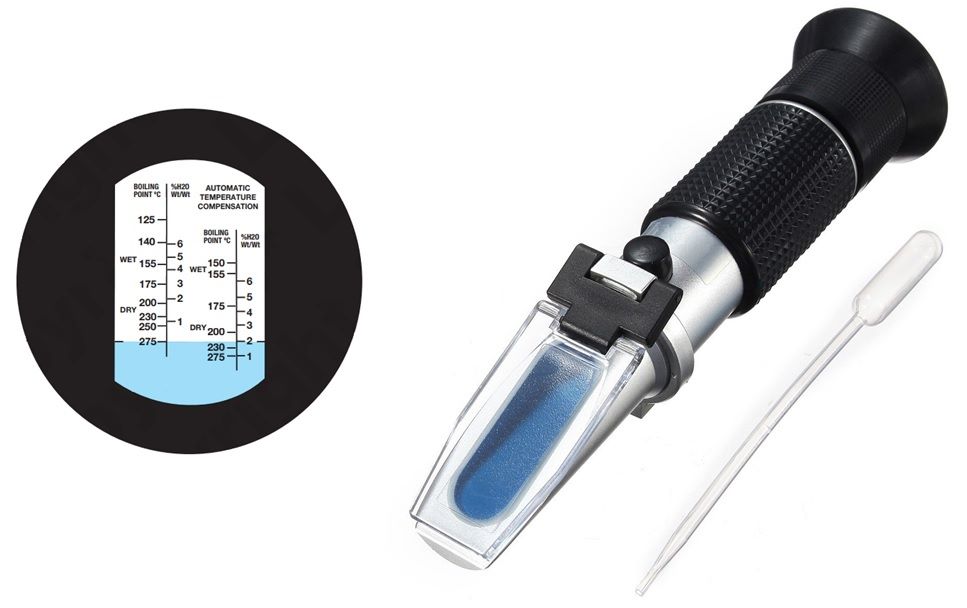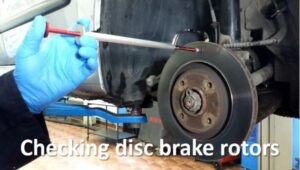Testing brake fluid with a refractometer
The brake fluid test with a refractometer is a procedure for determining the moisture content. The brake fluid has the bad property of being hygroscopic because it absorbs water from the atmosphere. The brake fluid begins to absorb moisture from the moment it is placed in the system. The liquid absorbs moisture through microscopic pores in rubber hoses, seals, and when exposed to air. The problem is bigger in areas with a humid climate.
Water in the brake system reduces braking efficiency. Even a small amount of moisture dampens the transmission of brake pressure to the end brake units, endangering vehicle safety. Also, moisture promotes corrosion on the internal metal parts of the brake system. Therefore, manufacturers prescribe regular replacement of brake fluid every 2 to 4 years. However, it is recommended to check the condition of the brake fluid regularly for moisture. The permissible moisture content in the brake fluid is up to 3%. When it is determined during the check that the share is higher than the allowed value, it is necessary to replace the brake fluid.
A refractometer is a measuring device that checks and measures the presence of water in the brake fluid. The refractometer is a precise optical instrument for measuring the moisture in the brake fluid. Fast and accurate measurement can only be done from two drops of brake fluid.
Pipette a small sample of brake fluid from the reservoir. Lift the glass lid of the refractometer and place one to two drops on the prism. Close the lid so that the liquid spreads evenly over the entire surface of the prism without air bubbles or dry areas. Wait about 30 seconds for the sample temperature to equalize with the environment. Redirect the refractometer so that daylight falls on the sample. The level of the blue-white line is observed through the eyepiece, which must not exceed the limit value of the moisture content in the brake fluid. After reading, carefully lift the lid and clean the measuring prism and lid with a soft towel (paper towel or soft cloth). After drying, place the refractometer in a suitable box.
Testing brake fluid with a refractometer
The refractometer is calibrated periodically. For calibration, we use new brake fluid from the newly opened packaging. Place two drops of new brake fluid on the measuring prism and wait 30 seconds for the temperature to equalize with the environment. We observe the position of the measuring line through the eyepiece. Set the measuring line to the zero position via the calibration screw. Now the refractometer is calibrated but only for such an ambient temperature. When the temperature is lower or higher by 5°C, the measuring device is calibrated again.
To testing brake fluid with a refractometer, follow these steps:









